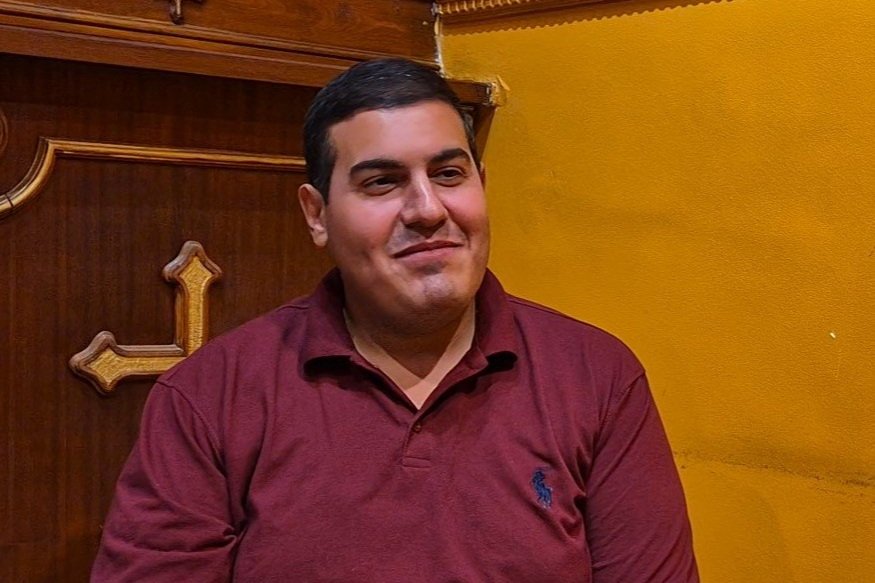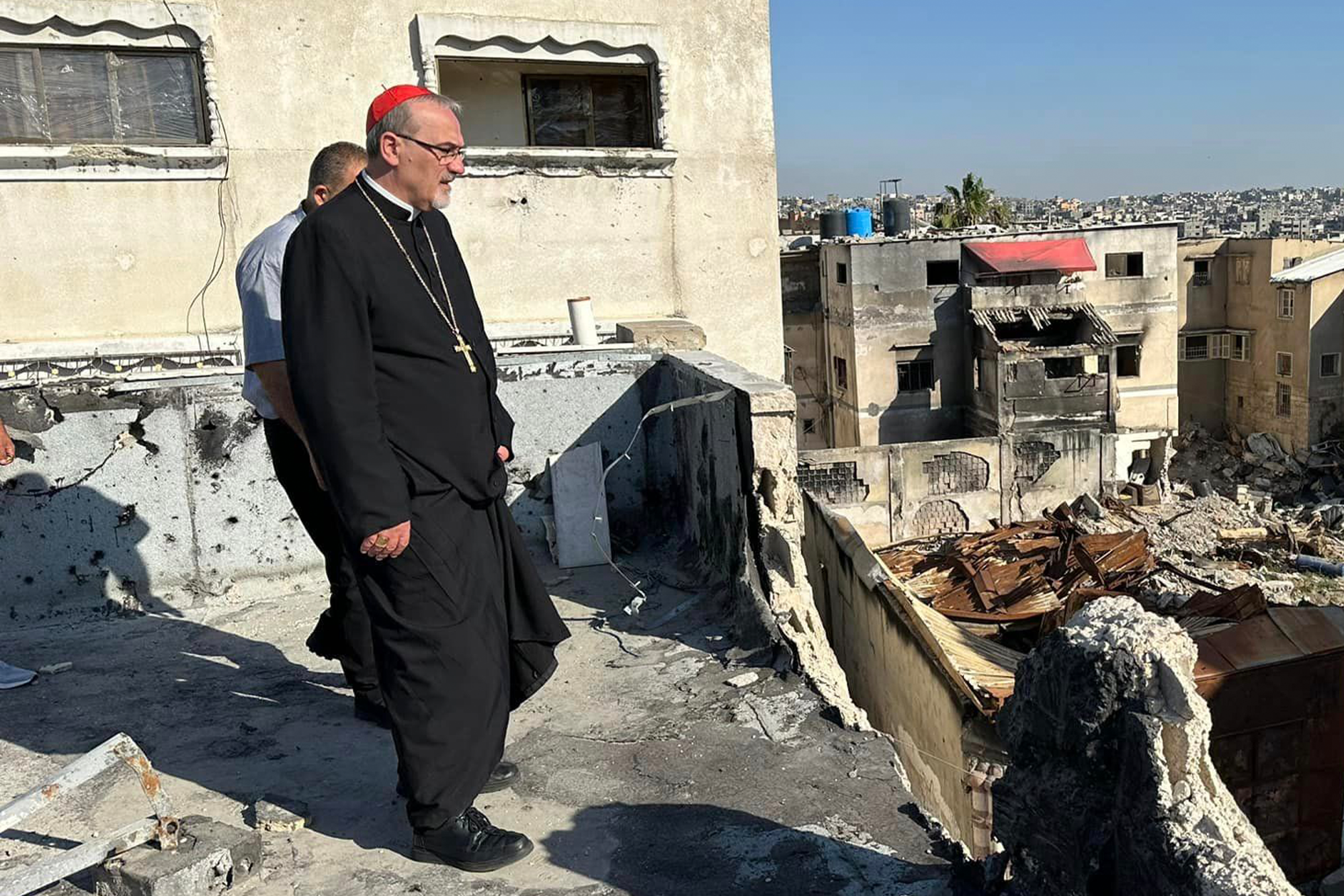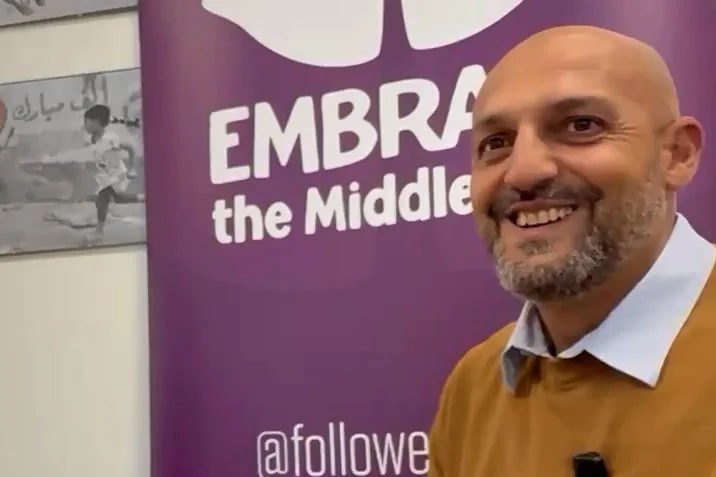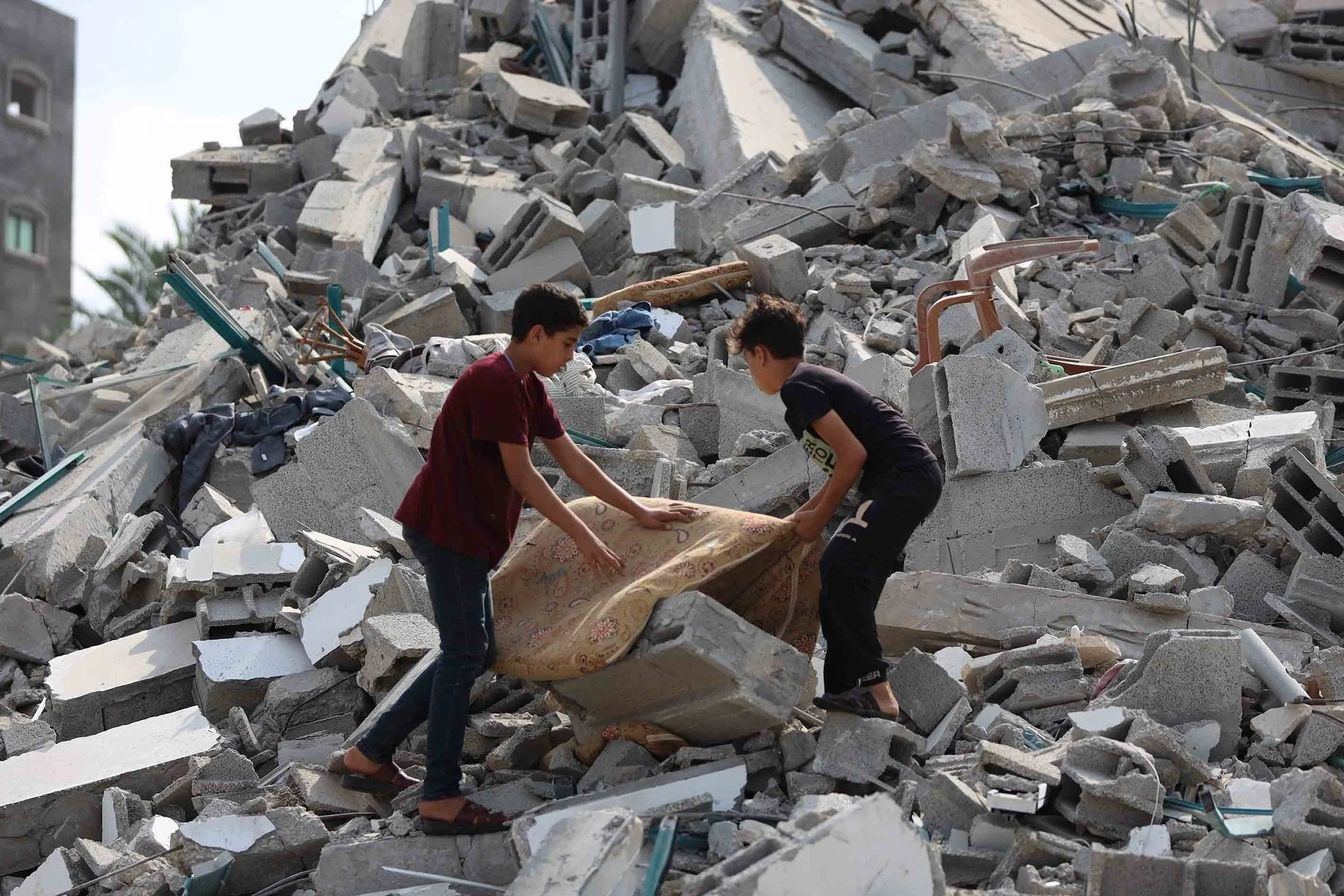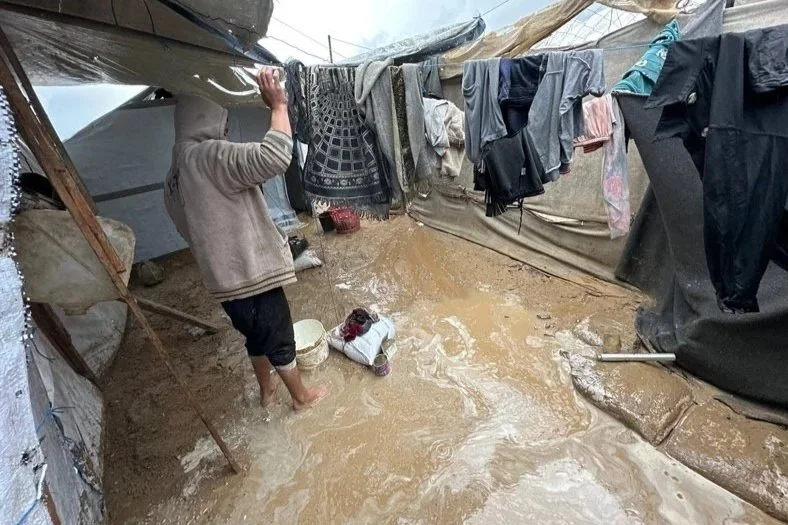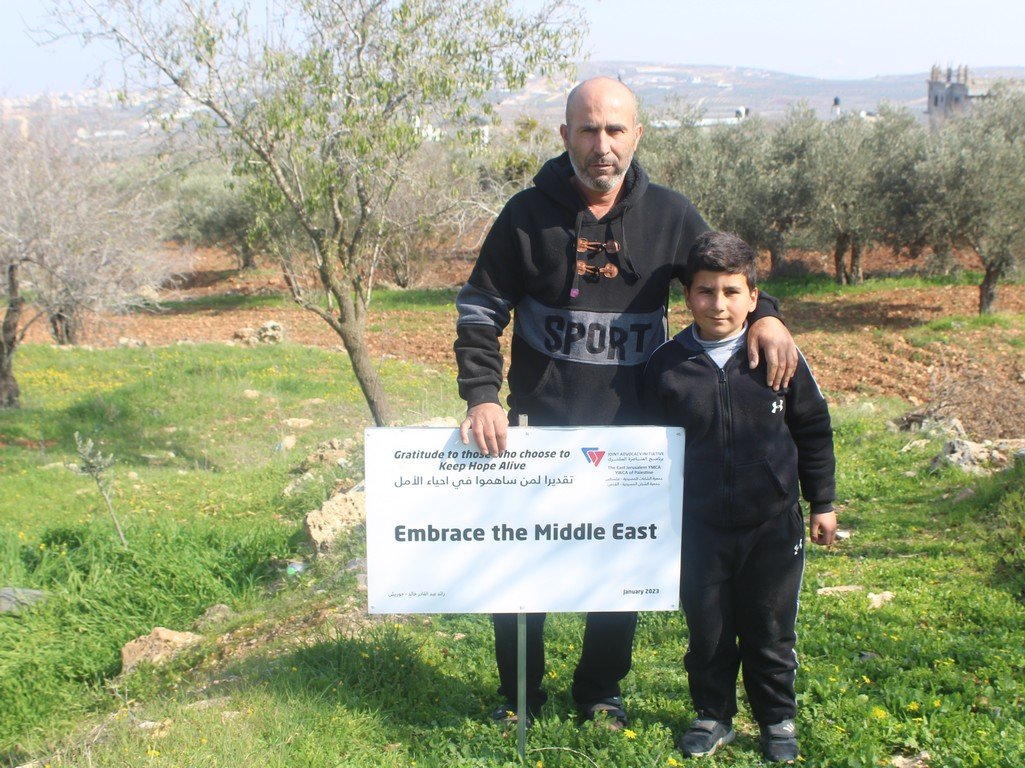
CHRISTIANS IN ISRAEL AND PALESTINE
Unsurprisingly, Christianity in the land where Jesus walked dates back to the days of the Apostles. In Arabic, Christians are known as Nasrani (from the Arabic word for Nazarene) or Masihi (from the Arabic Masih, meaning Messiah). In Hebrew they are Notzri, which also means Nazarene.
How many Christians are in Israel and Palestine today?
Approximately 45,000 out of the West Bank’s Palestinian population of 2.7 million are Christian. Before the outbreak of the current conflict around 1,000 Christians live in Gaza (0.05% of the population). In Israel there are around 120,000 Christians. These are made up of indigenous Arab citizens of Israel, Christians who have emigrated to the country, and a growing number of Messianic Jews.
The two largest churches in Gaza, Jerusalem and the West Bank are Catholic (made up of Melkite Greek Catholics 27% and Roman Catholics 19%) and Greek Orthodox (40%). In smaller numbers, but also a significant presence, are: Assyrians, Syrian Orthodox, Copts, Russian Orthodox, Lutherans, Anglicans, and Baptist evangelical groups.
FIND OUT MORE ABOUT CHRISTIAN WORSHIP IN ISRAEL AND PALESTINE
LENT IN THE MIDDLE EAST
CELEBRATING EID-AL KABIR: EASTER IN THE HOLY LAND
ST BARBARA’S DAY
WHAT IS THE CEREMONY OF HOLY LIGHT?
What are the challenges facing Christians in Israel and Palestine?
One of the biggest challenges facing churches in the West Bank and Gaza is to persuade Christian families to stay. The number of Christians in the Holy Land has been falling steadily. In 1948 Christians made up around 10% of the population. Today it’s around 1%. In Gaza more than half the Christian population has left in the last ten years, while the number of those killed in the ongoing conflict continues to rise.
The main drivers of emigration include limited economic opportunities and the ongoing Israeli occupation. Like their fellow Muslim Palestinians, Christians in the West Bank face restrictions on their movements, military check points, Settler expansion and attacks and military raids. Access to water, electricity, and health is limited and child detention and forced displacement whether by third-generation refugee status or home demolition are daily affronts which deny human dignity.
Since the escalation of violence following the Hamas attacks on 7 October 2023, the situation for Christians in Gaza has deteriorated dramatically. Many have lost their homes and livelihoods, and the airstrikes, collapse of healthcare, and severe shortages of food and water have created a critical and long-term humanitarian crisis. In this context, a growing number of Christians have either left or expressed a strong desire to leave Gaza in search of safety and stability.
CRISIS APPEAL: The long-term damage of the war in Gaza on a physical, psychological and structural level is immense, and it has also hugely affected the West Bank, Israel and the wider region. Its impact will be felt for decades to come. Embrace’s partners have been providing vital humanitarian support throughout the war and will continue to do so. Please give what you can to our Crisis Appeal. Your generosity will mean our partners can get help to where it is needed most.
FIND OUT MORE
STORIES FROM THE WAR IN GAZA: WORKING AT AL AHLI HOSPITAL
SERVING IN THE WEST BANK: “WE WANT TO BE THE HANDS OF JESUS”
RAMY’S STORY: ONE OF THE LAST CHRISTIANS OF GAZA?
CARDINAL PIZZABALLA’S VISIT TO GAZA
HEAR DIRECTLY FROM CHRISTIANS IN ISRAEL AND PALESTINE
THE OCCUPATION, OLIVE TREES AND FAITH IN THE WEST BANK
FINDING HOPE IN HARD PLACES - ANYA FROM ISRAEL
“FINDING HOPE IN HARD PLACES” - A REFLECTION FROM BETHLEHEM
PALESTINE’S FIRST FEMALE PASTOR
What impact does the Christian community in Israel and Palestine have?
Palestinian Christians are often referred to as ‘Living Stones’, as the descendants of the original Christians who have remained and kept their faith throughout the land’s turbulent 2,000 years of history. They are an embodiment of the Palestinian concept of sumud (steadfastness) and are salt and light to their communities.
The services Palestinian Christians provide to Palestinian and Israeli society, such as healthcare, schools and humanitarian support, are disproportionate to their small numbers. One-third of the healthcare system in the West Bank is either supported or run by the church. Similarly, the churches in Gaza are renowned for the medical and relief services that they provide, including Embrace partners, Al Ahli Hospital, the Near East Council of Churches and Caritas Jerusalem’s mobile medical clinics.
There are 71 church-related schools across East Jerusalem and West Bank. The schools serve the whole community and are open to all faiths. A significant proportion of students are Muslim. It is a similar picture in Gaza, where five Christian schools provide education to 3,000 children.
Palestinian Christians play an active role in the politics of the West Bank (6 seats of the 132-member Palestinian Council are reserved for Christians and Christians must head nine of the 27 municipal councils).
In political and religious dialogue across the three main faiths in Israel and the occupied Palestinian territory, Christians are commonly seen as moderators and have a reputation for building bridges and trust, and for progress within community life. Christian Palestinian charities such as Embrace partner Musalaha actively engage in reconciliation between Palestinians and Israelis.
LATEST FROM OUR PROJECTS IN ISRAEL AND PALESTINE
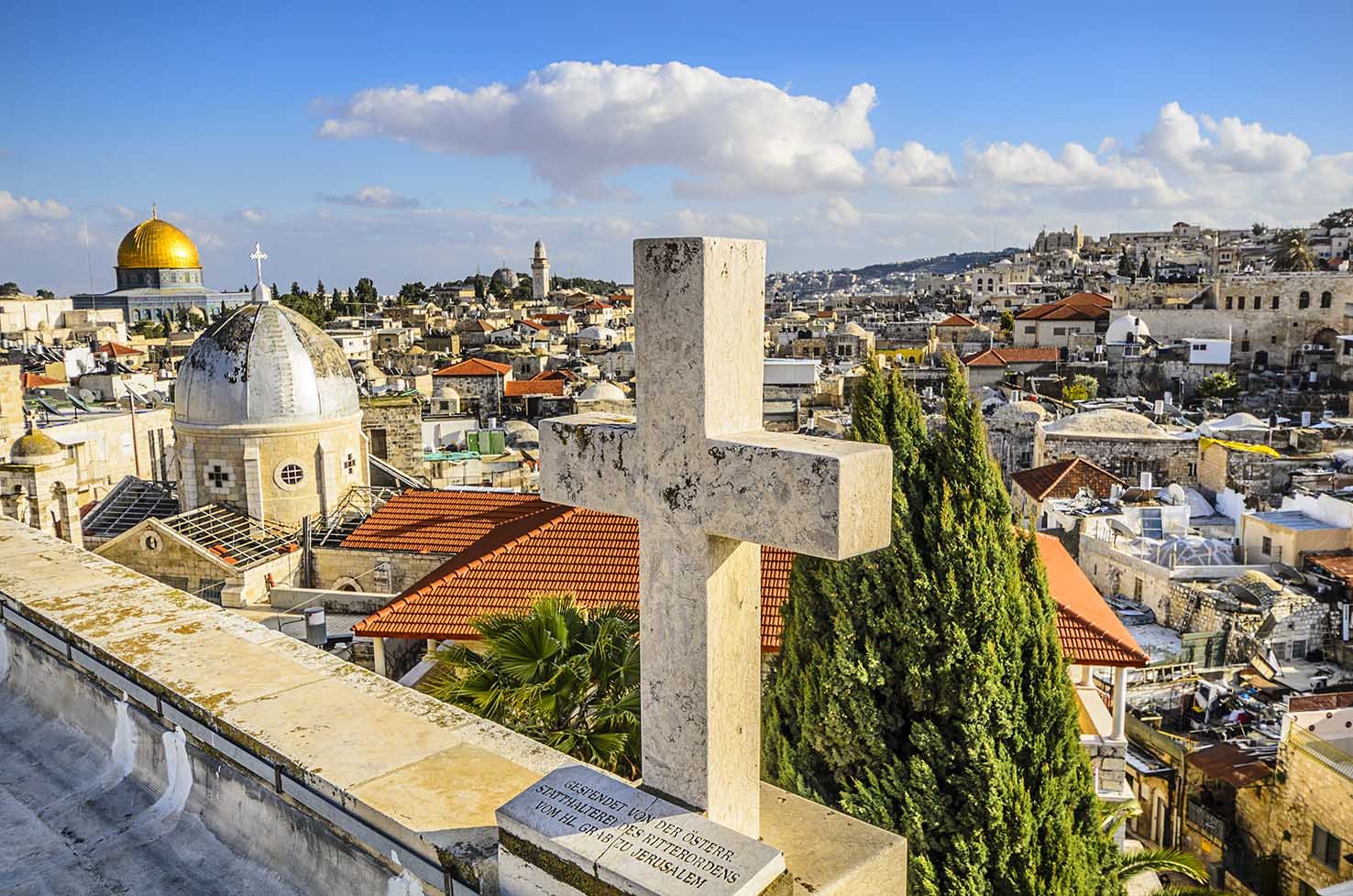
THE HISTORY OF CHRISTIANITY IN ISRAEL AND PALESTINE
According to the Book of Acts, it was in Jerusalem that the disciples received the Holy Spirit (at Pentecost), and it was from there that they began to spread the news of Christ. Jerusalem was where the earliest Christian community (initially a sect of Judaism) formed, under the leadership of St Peter and St James the Just (later described as the first Bishop of Jerusalem).
In the first few centuries AD, Christianity spread out from the Roman province of Judea (Israel and the occupied Palestinian territory today) to other parts of the empire. As it became distinct from Judaism, Christians faced frequent persecution and had to practise their faith in secret.
As Christianity was slowly increasing in the Judea, a series of Jewish rebellions, brutally supressed by the Romans, led to the destruction of the Jewish Temple and the City of Jerusalem as well as a scattering of the Jewish population. Jerusalem was replaced by the Roman City of Aelia Capitolina while the area now known as Israel and the occupied Palestinian territory was given the name of “Syria-Palestina” and then “Palestine”. Following Emperor Constantine’s edict of Milan in 313, Christianity became a recognized religion, and Syria Palestina quickly became a place of pilgrimage. In the 320s, construction began of the Church of the Holy Sepulchre, the Church of the Eleona (Olives) on the Mount of Olives and the Church of the Nativity in Bethlehem. Other early churches include St Porphyrius in Gaza, said to have been built as early as AD 425 (although the current structure dates to the 12th century). Find out more about St Porphyrius.
Although Jerusalem was seen as the spiritual heartland of Christianity, the early church was divided into four Patriarchates: Rome, Constantinople, Antioch and Alexandria. Jerusalem did not become an official patriarchate until AD 451, at the Council of Chalcedon. Disagreements at this council led to a split in the church and the formation of a body of churches called monofisite (including the Copts, the Syrians, and the Armenians). Those who did not accept the decisions of Chalcedon (which were backed by the Empire) became the Oriental Church while those that did (which included the Jerusalem Patriarchate) became known as the Melkites (meaning royal or emperor).
By the 7th century, Palestine had become a major multi-cultural and multi-ethnic centre of Christian pilgrimage, monasticism and culture. But when it was conquered by the advancing Muslim armies in the 630s, the region’s Christians once again experienced periodic persecution and were reduced to dhimmi status, which allowed them to continue to practise their faith, but under certain restrictions.
At the Great Schism (1054), the Jerusalem Patriarchate joined with that of Antioch and Constantinople, forming the Eastern Orthodox Church, whose language was mainly Greek. During the Crusades of 11th and 12th centuries, a Latin (Catholic) Patriarchate of Jerusalem was briefly established. But the patriarch was forced to flee when the Muslim rulers regained Jerusalem in 1187. However, the Catholic presence in Palestine remained as Franciscan monks were granted permission to oversee the Christian holy sites. A resident Latin patriarch didn’t return to Jerusalem until 1847.
Under the Ottoman Empire, Christians in Palestine continued to be tolerated (as dhimmi), and the Eastern Orthodox Church was again dominant. It was during this time that the local Eastern Patriarchate was dominated by the Greek clergy. The period saw a power struggle between the various denominations for control of the major Christian sites. This led to the Status Quo in 1757, which formalised the sharing of three key religious sites in Bethlehem and Jerusalem – an agreement which still holds today.
Following a dispute over the election of the Antioch patriarch, the Eastern Orthodox Church split in the 18th century. One side re-established communion with Rome (while continuing to use the Eastern Orthodox liturgy), leading to the formation of the Greek Melkite Catholic Church. Today, the Melkites make up 60% of Christians in the Holy Land.
In the 19th century, Protestant churches began to be established – including Anglican and Lutheran, but they have remained small in number.
After the First World War, control of Palestine passed to the British until their withdrawal in 1948, when the territory was split and the state of Israel established. In the upheavals that followed, Christian communities had a mixed experience. Some were able to stay in their homes, but many were forced to leave. Today they, like Palestinian Muslims, have their community split between territories: Israel, the occupied West Bank and Gaza.
In the last decade, the Christian population of Israel has risen, mainly due to immigration – mixed Jewish/Christian families from Russia and economic migrants, particularly from Africa. In the West Bank, the number of Christians has remained fairly stable, although there has been a rise in migration in recent years. In Gaza, the population has been steadily falling and is now facing existential threat. There were fewer than 1,000 Christians in Gaza at the end of 2023.







